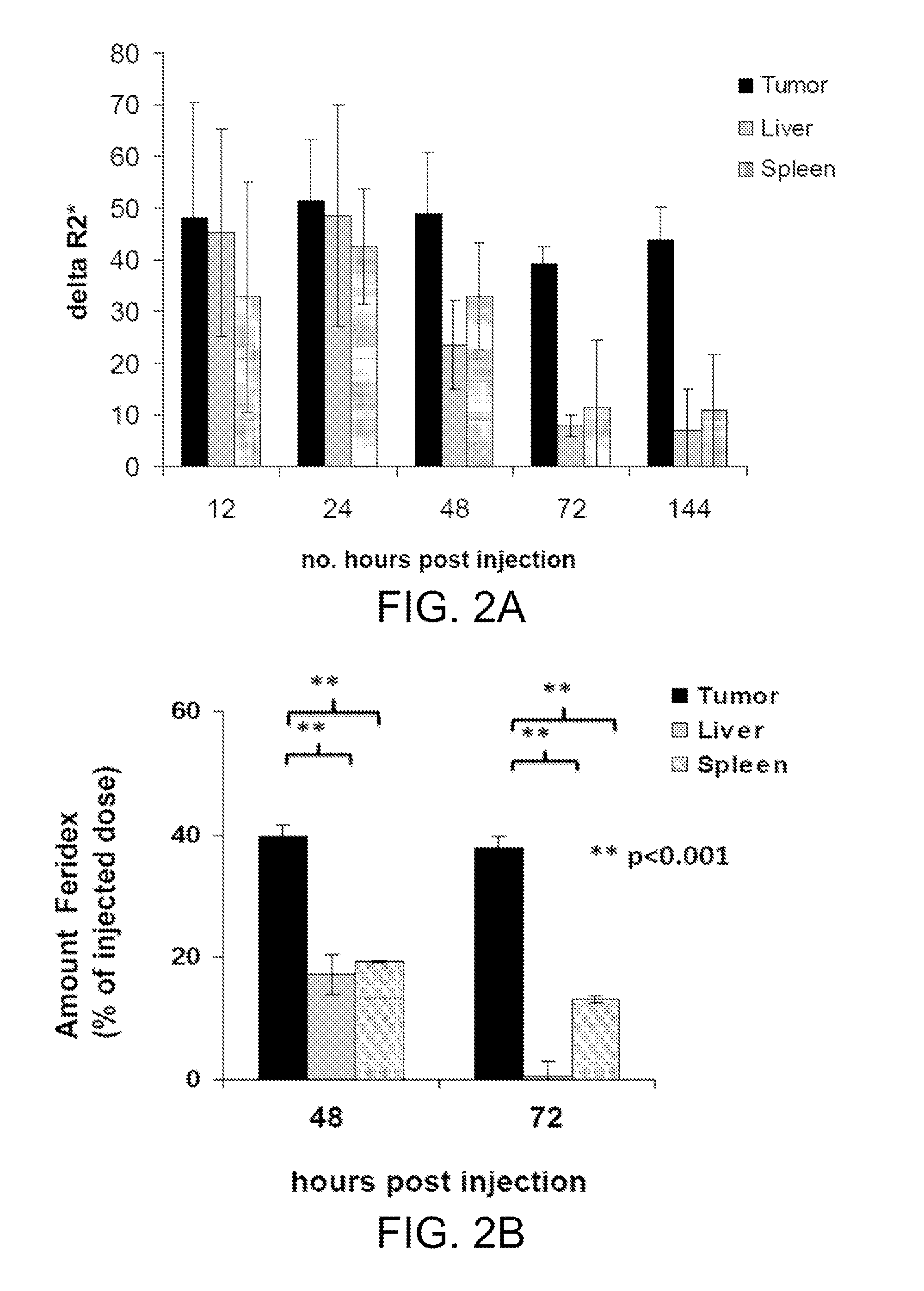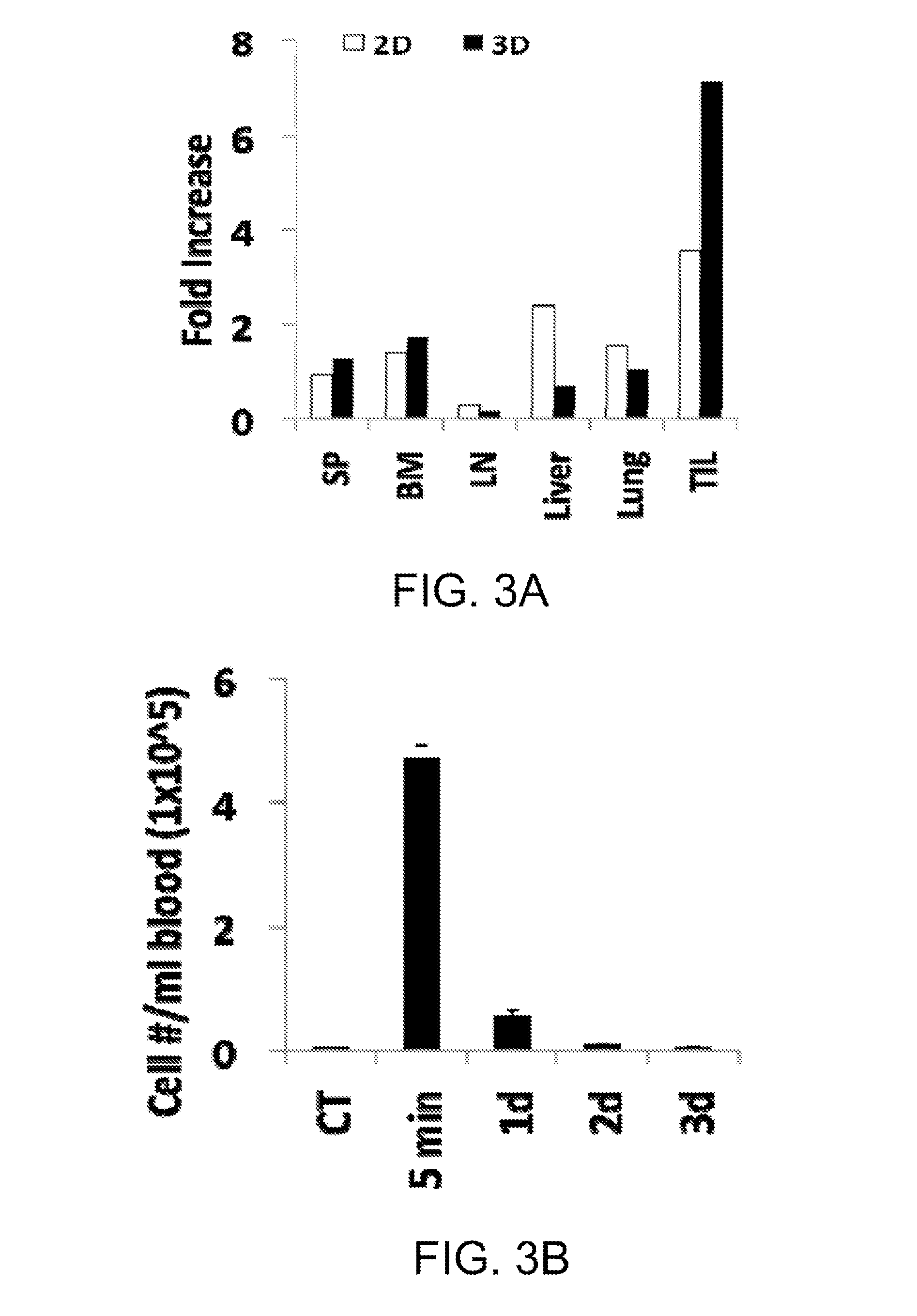Methods and compositions for treating tumors using myeloid derived suppressor cells
a technology of suppressor cells and tumors, applied in the field of compositions and methods for diagnosing and treating tumors using myeloid derived suppressor cells, can solve the problems of limited success of monocyte cell lines, t cells, nkt cells, and monocyte cell lines in attempts to find suitable tumor targeting carriers, and achieve the effect of targeting tumor cells in non-lymphoid organs
- Summary
- Abstract
- Description
- Claims
- Application Information
AI Technical Summary
Benefits of technology
Problems solved by technology
Method used
Image
Examples
example 1
Labeling of MDSCs with Iron Oxide Particles
[0179]This Example demonstrates that adoptively transferred MDSCs can be effectively labeled by co-culturing MDSCs in the presence of ferumoxides, an FDA approved SPIO (Feridex IV®) already in use for in vivo clinical cell tracking in the United States and Europe, and that labeled MDSCs migration can be tracked.
[0180]To identify the in vivo trafficking patterns of adoptively transferred MDSCs in a longitudinal manner within a single mouse, diagnostic imaging methods were employed. Recently several groups have used superparamagnetic iron oxide particles (SPIOs) to label a variety of different cells which they could then follow via MRI [see, Arbab A S, et al. (2004) Blood 104(4):1217-23; Hamm J, et al. NMR Biomed. 2008; 21(2):120-8; Beduneau A, et al. PLoS One. 2009; 4(2):e4343]. These techniques were adapted to label MDSCs with ferumoxides, which enabled detection, using MRI, of the presence of labeled MDSCs within the tumor and other organs...
example 2
MDSCs Migrate to Tumors In Vivo
[0182]This Example demonstrates that adoptively transferred, labeled MDSCs migrated to tumor sites in vivo.
[0183]Ferumoxides-labeled MDSCs were administered to mice that had previously been injected intrahepatically with MCA26 colon cancer cells to simulate hepatic metastases of colorectal cancer, and followed over one week post injection. Mice received MRIs prior to MDSC transfer and then daily (n=7). T2*-weighted images (GRE images) and GRASP images were obtained and analyzed. At day 3 after transfer increased signal loss was observed within the tumor, highlighting both the periphery of the tumor as well as vascular structures. White marker sequences such as GRASP have been developed to increase the accuracy of labeled cell detection [see, Mani V, et al. Gradient echo acquisition for superparamagnetic particles with positive contrast (GRASP): sequence characterization in membrane and glass superparamagnetic iron oxide phantoms at 1.5 T and 3 T. Magn ...
example 3
MDSCs can Transfer Oncolytic Viruses to Tumor Cells In Vitro and In Vivo
[0187]This Example demonstrates the effectiveness of MDSCs for the delivery of tumor-specific therapeutics. To test the effectiveness of VSV-loaded MDSCs (VSV-MDSCs) for delivering virus to tumor cells, MDSCs were infected with rVSV-GFP, a replication competent VSV vector expressing green fluorescent protein [see, Ebert O, et al. Oncolytic vesicular stomatitis virus for treatment of orthotopic hepatocellular carcinoma in immune-competent rats. Cancer Res. 2003; 63(13):3605-11]. MDSCs were co-cultured with rVSV-GFP at varying multiplicities of infection (MOIs) (10, 300, 1000), washed numerous times to remove free virus from their presence, and seeded into the upper well of a transwell plate. The lower well contained MCA26 tumor cells in culture. After 24 hours plates were examined for both cytopathic effects (CPEs) and GFP expression. Cells exhibiting CPE were expected to express minimal GFP as they should have a...
PUM
| Property | Measurement | Unit |
|---|---|---|
| molecular weight | aaaaa | aaaaa |
| molecular weight | aaaaa | aaaaa |
| molecular weight | aaaaa | aaaaa |
Abstract
Description
Claims
Application Information
 Login to View More
Login to View More - R&D
- Intellectual Property
- Life Sciences
- Materials
- Tech Scout
- Unparalleled Data Quality
- Higher Quality Content
- 60% Fewer Hallucinations
Browse by: Latest US Patents, China's latest patents, Technical Efficacy Thesaurus, Application Domain, Technology Topic, Popular Technical Reports.
© 2025 PatSnap. All rights reserved.Legal|Privacy policy|Modern Slavery Act Transparency Statement|Sitemap|About US| Contact US: help@patsnap.com



